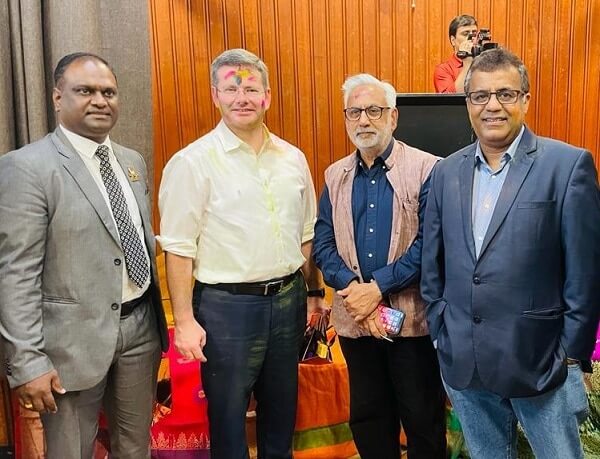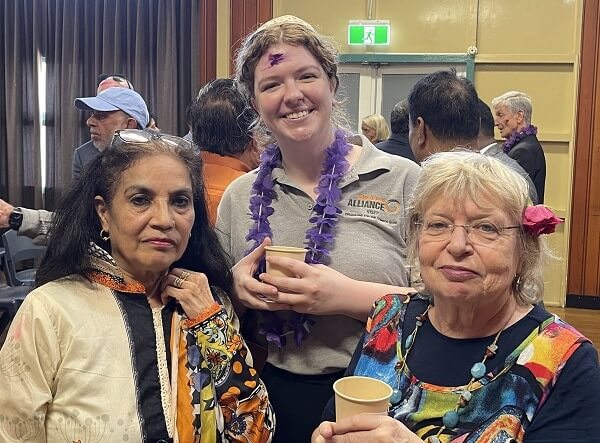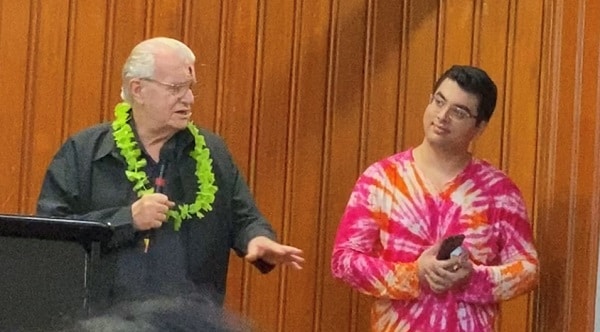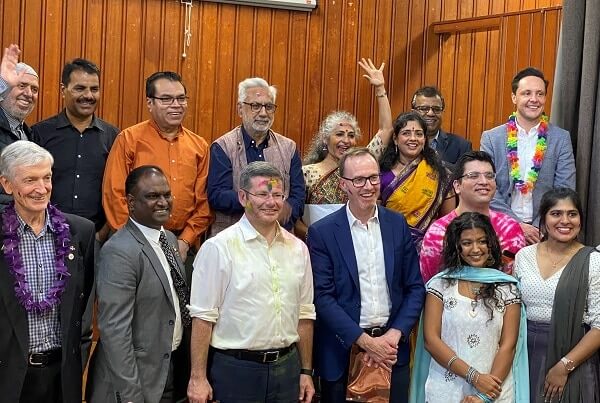The fundamental message of the Festival of Colours – of amity and goodwill – was brought forth in a rare interfaith Holi celebration in Sydney recently.
Have you noticed how at the end of a round of Holi festivities with gulal (coloured powder), we begin to match each other in skin colour?
Our new colour at Holi is not brown or black or white, but an amalgam of hues. The gulal rubs off on others as we embrace to say ‘Happy Holi’, and as we look at each other smeared in colour, we cannot but help laugh at the absurdity of it all.
The differences in skin colour obliterated, other differences diminish too, and the result is an overall increase in bonhomie. These are the real takeaways from Holi: acceptance and inclusivity, peace and harmony, values of which we need ample booster shots, given the polarized world in which we find ourselves currently.
Organised by four like-minded platforms The Humanism Project, Hindus 4 Human Rights Australia and NZ, NRI Affairs, and Indian Crescent Society of Australia ICSOA, the event attracted people from various faith and political backgrounds.

“Green, red and blue have all come together,” Nathan Haggarty of Liverpool Council remarked as he gestured towards the politicians in the front row.
Before him, David Shoebridge, Greens member of the NSW Legislative Council spoke passionately about the need for greater understanding between cultures, religions, and languages. “We cannot progress cross-cultural issues in Australia till we acknowledge the major dispossession and crimes against First Nations people,” he added.
He also spoke about the looming threat of Islamophobia in India spilling over to the diaspora.
Abbas Raza Alvi of ICSOA recalled his memories of an interfaith Holi in India. “I never thought of Holi as a Hindu festival. We would call on our neighbours, greet them with an embrace, play some Holi and share sweetmeats. And they would do the exact same at Eid.”
He also detailed the festivities at the Dewa Sharif shrine at Barabanki town in UP, which marks the Festival of Colour annually. The tomb, a fusion of Hindu and Islamic architectural styles, is in memory of the Sufi saint Haji Waris Ali Shah (1809-1905) whose best-known teaching remains Jo Rab hai wahi Ram hai (‘Hindu and Muslim god is but one’).

Echoing a similar sentiment, NSW Minister for Multiculturalism Mark Coure said, “The essence of multiculturalism is a spirit of inclusiveness. It benefits us all as we participate in each others’ cultures. On Holi, I wish you all vibrant fresh beginnings.”
‘Fresh beginnings’ is a term that is meaningful in many ways. Charishma Kaliyanda, Liverpool Councillor, touched on this as she brought up an oft-forgotten significance of Holi. “Holi is also a festival of forgiveness. It is a time to bury bridges, overcome challenges, and build sympathy and understanding.”
An important Holi lesson is to let bygones be bygones as we embrace and have a laugh together. It is a time to start anew with old acquaintances, and a time to make new ones.
Earlier, Dr Shanti Raman of Hindus 4 Human Rights set the tone for the event with her Sanskrit invocation to Mother Earth, of who we are all equal children: Oh Mother Earth, salutations to you. Please forgive the touch of my feet on Earth, which is your holy body.
Rabbi Sacha spoke of the role of diversity in society, calling the multiple groups present on the occasion “to build a better Sydney.”

Another Jewish representative Jess Harrison from Sydney Alliance, spoke of the recently concluded Jewish festival of Purim, marked somewhat like Holi with feasting and merrymaking, exchanging of gifts of food, and street parades with masks and costumes.
Many cultures around the world have a festival of “letting go” like Holi that include boisterous festivities such as the throwing of flour or water at each other.
“I’d love you all to join us at our next celebration of Purim,” Harrison told the meeting.
Rev Bill Crews AM, one of our nation’s 100 “National Living Treasures”, had the audience in thrall as he brought up the ongoing Ukraine conflict. The dance interlude performed by kids just before he spoke, reminded him of the footage of Ukrainian kids affected by the military aggression. He said, “We must call out those that think they or their religion is better than everyone else’s. We must call out those who take away our right to be.”

It was a wonderful encore to Nathan Haggarty’s statement earlier: “We must call out that which divides us, and celebrate that which brings us together. Because there is much more that binds us than divides us.”
USYD student Shani Patel, providing a youth perspective on what Holi means in contemporary Australia, was a welcome addition: the youth element is too often missing in community celebrations. Shani spoke of how she rejected her “brown roots” to identify with her peers. “Yet it was at celebrations like Holi that the real me emerged. The Radha Krishna aspect particularly appealed to my queerness.”
The messages on the occasion, which had “strength with humanity” according to another attendee former NSW Senator Lee Rhiannon, helped make it a different – and wonderfully reflective – Holi.
Photos: Abbas Raza Alvi, Pawan Luthra
READ ALSO: How mixed families celebrate Diwali





